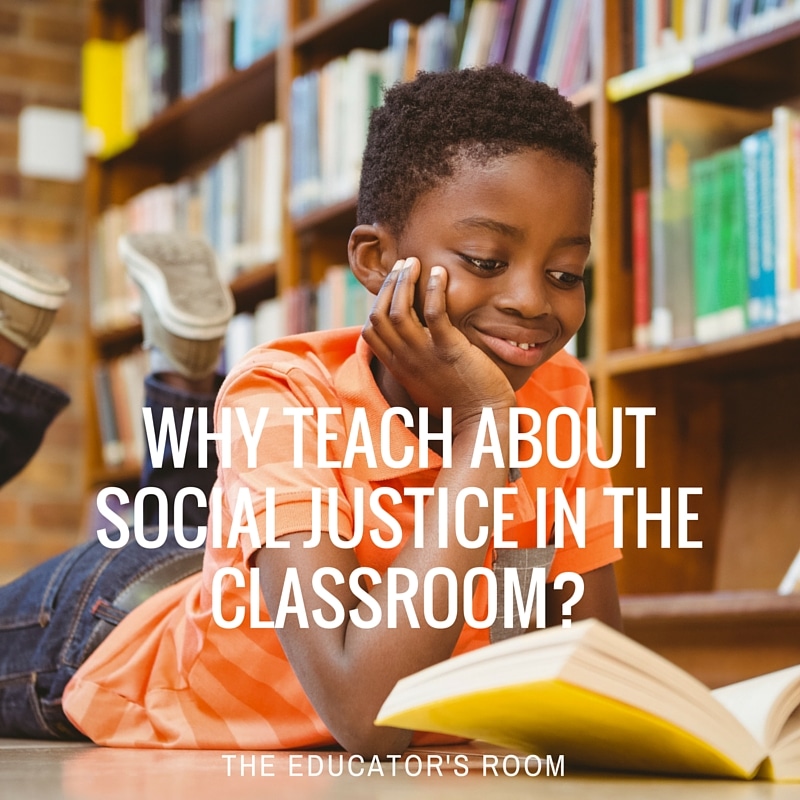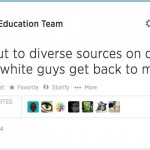Social justice can have a very concrete meaning for young children. To them, it is about what is fair and what is not fair. You can hear it from them when a teacher always allows one or two students to do all of the coveted classroom jobs. To them, that is not fair and the braver children will say something about it. But how do we use this innate sense of injustice to help them see it when they encounter it in the real world?
Some of you reading this may wonder why we should even attempt to teach social justice in the classroom. I’ve always believed the old adage that public education in the United States was supposed to be the great equalizer and so I think it is the perfect place to teach social justice. It also seems to be the perfect place to teach this concept as our population becomes more diverse.
One experience that I had with this was when my 8th-grade students read an excerpt from The Diary of Anne Frank. Reading in her own words what Anne experienced in her young life outraged them. They couldn’t imagine anyone hating a group of people enough to round them up and put them in concentration camps. We discussed how dislike of someone different could turn to this type of hatred. More importantly, for them was our discussion of what people could have done to stop this from happening. They quickly saw that had people spoken up and not accepted everything they heard as truth this might not have happened. We concluded by having the class discuss and write about their own experiences with prejudice.
For those of you who teach elementary school, there is a program that is now available from Jane Elliot referred to as the “blue eye, brown eye” activity. The basis of this activity is that you separate your blue-eyed students from your brown-eyed students and then decide which group will be favored. If you can’t make this distinction based on eye color you can use some other distinguishing characteristic such as height for the groups. Depending on the age group you are working with you can decide on how long you want to try this. Most teachers that I know who have used this activity found that just one day was enough to make the point. The favored group gets to experience things that the other group does not such as sitting wherever they want in class, leaving for lunch first, and they being allowed to go to the bathroom the first time that they asked. Discussion about the feelings of the two groups after the conclusion of the activity is a must so that everyone gets to voice their feelings. For information about resources for this program click here.
A powerful multi-year project called the Paper Clip Project was the result of a middle school principal’s idea to start an after school activity to teach 8th-grade students about diversity and social justice at a school in rural Tennessee. The topic of the Holocaust was chosen and began with the death of 6,000,000 Jews. The concept of 6,000,000 people needed to be made concrete but manageable. Students researched a variety of items and discovered that a Norwegian Jew had invented the paper clip and that they were worn by Norwegians as a silent protest of Nazi occupation during WWII. The students began collecting paper clips but because 6,000,000 of anything is such a large number they had to become creative to get the number that they needed. They wrote letters to celebrities asking for paper clips. They requested that those sending them explain why they chose to respond. The project continued for several years and the students not only received paper clips but stories, pictures and artifacts from those who responded to their requests. The culminating artifact was an authentic railway car used by the Nazis to transport prisoners to the concentration camps. The railway car was donated by a couple who were White House correspondents for German newspapers. They bought the car and donated it to the school. The children have turned the railway car into a museum that contains all of the items that they collected during their research. If you want to learn more about this project and see the documentary that was made about it click here.
Social justice does not have to be taught in isolation. There are any number of ways to incorporate this concept into both English and Social Studies classes. If you have any lessons that you have used successfully please share them in the comments.







Leave a comment